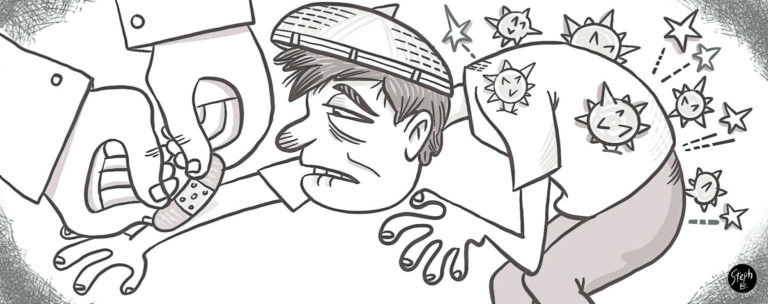
Philippine Daily Inquirer/February 05, 2021
On Jan. 30, 2020, the Philippines had its first confirmed case of the novel coronavirus: a 38-year-old woman who had traveled from Wuhan, China, and arrived in the country nine days earlier. On Feb. 1, 2020, the country reported its first COVID-19 death: that of the 44-year-old male companion of the woman from Wuhan.
Since then, some 370 days after that first case, the number of COVID-19 cases in the Philippines has ballooned to 530,118 cases as of Wednesday. According to data from the Department of Health (DOH), at least 14,393 medical workers have since contracted the virus, with fatalities at 83 and active cases at 303.
After one wrenching year of COVID-19 and its devastating impact on the country, where is the Philippines now?
For starters, at 79th place out of 98 countries when it comes to pandemic response, according to Australian think tank Lowy Institute. The index scores were based on each nation’s confirmed COVID-19 cases, deaths, and testing rates.
Health Undersecretary Maria Rosario Vergeire has said it is “unfair” for the Philippines to be compared to other countries that have “better health systems” and more resources. Her words, though, are belied by the country ranking well below its neighbors with similar economies like Vietnam (which placed second), Myanmar, Thailand, and Sri Lanka. The last two countries also landed in the top 10.
A full year since our first case, and the Philippines is in a mad scramble for vaccines already being used widely by other countries, and still in the throes of what has been described as the toughest, longest lockdown in the world.
It was an erratic, hit-and-miss affair from the very beginning, when the President himself first flippantly dismissed the problem, threatening to “slap” the virus in February and declaring that it “will die a natural death.” The government took its time banning flights from China, the source of the virus, as well as conducting mass testing, saying it was “unrealistic” to test the entire populace.
Through 2020, the President displayed a jarring lack of basic knowledge about the pandemic, spreading misinformation that didn’t help the health crisis any. (At one time, he insisted that face masks could be washed with gasoline if people couldn’t afford other disinfectants.) When a total lockdown was imposed on the country on March 16, the administration turned the health crisis into a military exercise. Police and soldiers patrolled the streets, arresting, heavily fining, and sometimes cruelly treating curfew and quarantine violators, most of them workers stranded by the ban on public transport. Meanwhile, government appointees and officials such as Sen. Koko Pimentel, police chief Debold Sinas, and presidential spokesperson Harry Roque were let off lightly despite their violations of health protocols.
The severe lockdown would force thousands of small- and medium-sized businesses to close down, leaving millions of workers jobless and sinking the country’s economy to its lowest level since 1947. The country’s gross domestic product contracted by 9.5 percent in 2020—the worst economic dive in Southeast Asia.
In December, around the time the President said he had just “realized” the importance of mass testing despite public clamor for it as early as March, news came that COVID-19 vaccines developed in record time had become available. But the government quickly botched public confidence in a mass immunization program first by blithely excusing the shocking lawbreaking of people around the President who helped themselves to smuggled Sinopharm vaccine shots from China, and then by appearing to favor another China-made vaccine, Sinovac, for mass rollout. Top health and Malacañang officials themselves led the drumbeat for Sinovac despite international reports of its disappointing efficacy rate at just over 50 percent. The result? Majority of Filipinos are reluctant at this time to have themselves inoculated, according to surveys, even as millions of other citizens in other countries—among them Myanmar, Nepal, Bangladesh—have had a head start in mass vaccination and getting their lives back on track. The delay, warned global observers, means that the Philippines will have the slowest economic recovery in the region.
The monumental misdeeds and blunders and missed opportunities of the past year, let alone the immense suffering that has been inflicted on the people, would have humbled any administration capable of introspection. But there was the much-criticized health secretary on Jan. 29, still obliviously casting such criticisms as political bellyaching and point-scoring. “Our detractors will have a talk on all the things that we have accomplished, but the scores, the numbers, the data can speak for themselves,” said Francisco Duque III.
The first step in solving a problem, it is said, is acknowledging that there is a problem in the first place. By that measure, the Philippines is in a dim place, a long way off from deliverance.